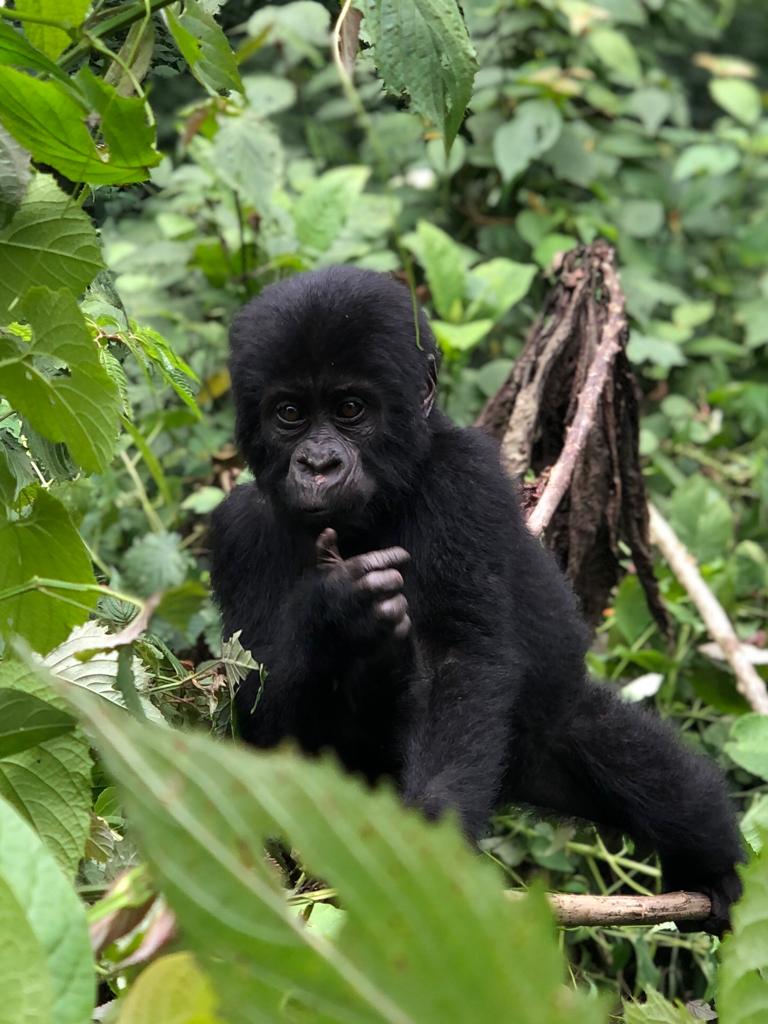Table of Contents
Which Country Is Better for Gorilla Trekking Uganda or Rwanda? | Where To Go For Gorilla Trekking
When deciding whether to go on a gorilla trek safari in Africa, which country is better for Gorilla Trekking Uganda or Rwanda?
How does gorilla trekking in Uganda compare to Rwanda? Both are excellent choices; selecting the right one for you will depend on your specific travel preferences/needs.
In this blog, we will compare and contrast the gorilla trekking experiences in Uganda and Rwanda. See below for a summary of the key differences between these two gorilla trek destinations.
Gorilla Trekking: Uganda Versus Rwanda
A. Contrast 1: Number Of Gorilla Families
- Gorilla families In Bwindi Impenetrable National Park
There are 50 gorilla families and 13 lonely individuals in Bwindi Impenetrable National Park, but only 21 families have been habituated to human visitation. These 21 families are spread among four tracking regions: Buhoma, Ruhija, Rushaga, and Nkuringo.
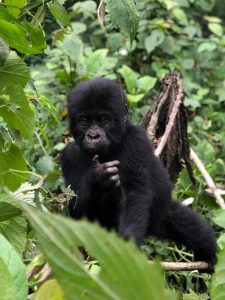
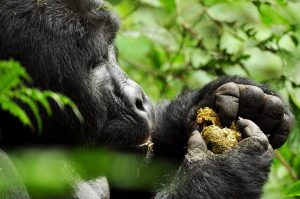
- Gorilla families in Mgahinga National Park
Mgahinga National Park in Uganda is home to several families of critically endangered gorillas.
Mgahinga National Park in Uganda is home to several families of critically endangered gorillas.
The habituated mountain gorillas in the park live in families called “gorilla families.” Over one hundred mountain gorillas call Mgahinga gorilla national park home, split between the Nyakagezi and Hirwa habituated gorilla families. The Nyakagezi family of gorillas is one of the groups that allows visitors to trek with them every day.
- Gorilla families In Volcanoes National Park
In the Volcanoes National Park, there are 10 separate groups of gorillas. An estimated 380 mountain gorillas call this park home. There are volcanoes in the park, which are a part of the larger Virunga mountain ranges that go all the way to the Democratic Republic of the Congo. The Virunga range is home to approximately 500 mountain gorillas. The other half are protected in parks like Bwindi and Mgahinga in Uganda.
There are ten families of habituated gorillas in Rwanda, including the Susa Gorilla Group (Susa A Family), Karisimbi Gorilla Group (Susa-B), Sabyinyo Gorilla Group, Amahoro Gorilla Group, Umubano Gorilla Group, Agashya Gorilla Group, Kwitonda Gorilla Group, Hirwa Gorilla Group, Bwenge Family Group, and Ugenda Gorilla Family.
In terms of the number of gorilla families, Uganda surpasses Rwanda.
B. Contrast 2: Number of Permits
Gorilla trekking is rapidly gaining in popularity as one of the continent’s top tourist attractions. Thankfully, there are stringent laws in place to safeguard these gentle giants, and the number of daily permits is limited. Habitually, just eight people each day are allowed to spend one hour with a group of gorillas. Uganda’s Bwindi Impenetrable National Park is home to 13 groups, whereas Rwanda’s Mgahinga Gorilla National Park is home to only one of the country’s critically endangered mountain gorillas.

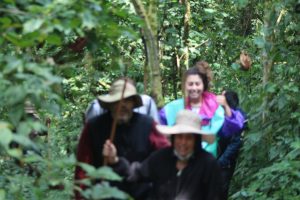
The Virunga Mountains’ Mgahinga Gorilla National Park is one of the best places in the world to go gorilla trekking. However, there is only one troop of gorillas and relatively few places to stay, so it is not a particularly popular choice. For the sake of this blog, I will not be comparing the more remote Bwindi National Park in Uganda to the more well-known and easily accessible Volcanoes National Park in Rwanda for gorilla trekking.
C. Contrast 3: Environment and Terrain
Gorilla trekking is possible in both Uganda and Rwanda, but the principal parks in each country have vastly distinct ecosystems and topographies. The Virungas, of which Rwanda’s Volcanoes National Park is a part, are a range of largely inactive volcanoes. The bamboo forest zone is where the gorillas spend virtually all of their time, making for a picturesque viewing of these magnificent creatures. Vegetation is typically sparse, allowing for unobstructed views.
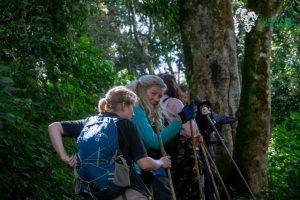 |
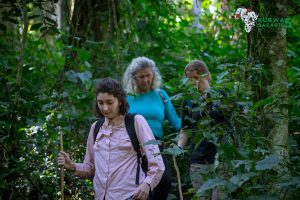 |
Bwindi Impenetrable National Park is a large section of tropical rainforest and the most popular gorilla trekking site in Uganda. It’s a beautiful location, although as the name implies, it can be difficult to see the gorillas due to the thicker foliage.
D. Contrast 4: Price For The Gorilla Permits
Price is another major factor to think about while deciding between gorilla trekking in Uganda and gorilla trekking in Rwanda.
Rwanda’s excessively high gorilla viewing fees are in stark contrast to Uganda, where citizens may obtain a permit for a pittance. Refer to the UWA tariff for 2022-2023 for pricing information. The cost is $700 for a non-resident foreigner, $600 for a foreigner, $70 for a local, and 250,000 UGX for an East African resident. Whereas Rwanda charges US$1,500. Huge dissimilarity. Nothing related to your trip, including transportation, a guide, lodging, etc, is included in this price.
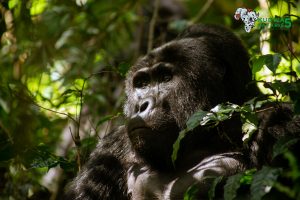
![]()
The only things that are paid for are the trek itself, the park ranger who will be your guide, and the trackers who will go ahead of you to discover the gorillas. The guide, trackers, and (if you’re using one) the porter all work for tips.
This pricing comparison is mostly for non-resident tourists. Therefore visitors on a budget safari will find it simpler to select Uganda gorilla trekking safari and for tourists who intend to take a luxury gorilla safari, Rwanda gorilla trekking permit might be a choice for them.
One gorilla trekking permit in Rwanda costs the same as two in Uganda, but you only get an hour with the gorillas in both countries. Thus, the price of a single gorilla permit in Rwanda is equivalent to the cost of two gorilla trekking licenses in Uganda.
E. Contrast 5: Gorilla Trek Conditions
Traveling in Rwanda is typically less difficult than in Uganda due to the country’s more favorable terrain. But this is not an absolute. The gorillas’ whereabouts dictate daily variations in the weather. Some of the gorilla groups’ territories are more accessible than others. After a rainstorm, the forest routes can become quite hazardous due to the increased moisture.
For Bwindi Impenetrable National Park in particular, where precipitation levels are consistently high, this is an important consideration. Rwanda’s trails are generally well-defined and easy to follow, but Uganda’s are notoriously treacherous due to their steepness and dense vegetation. Although, some people may find the high altitude of Rwanda to be difficult.
F. Contract 6: Lodging/Accommodation options
In Uganda and Rwanda, trekkers can choose from a variety of comfortable lodges and hotels on their gorilla-viewing adventures. Possibly more high-end luxury lodges can be found in Rwanda, whereas Uganda has a few more mid-range hotels to choose from.

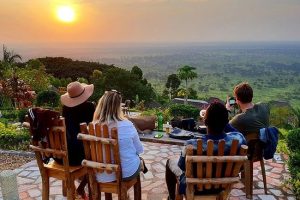
There are a number of lodges in Uganda that are right on the park’s border and feel like you’re in the middle of the forest, while in Rwanda many of the hotels have views of the mountains or lakes but are further from the forest itself.
G. Contract 7: Ease Of Access (The Journey From Airport To The Park)
When comparing Rwanda’s Volcanoes National Park to Uganda’s Bwindi Impenetrable National Park, the former is much more approachable. The park is around a three-hour drive from Kigali, Rwanda’s capital.
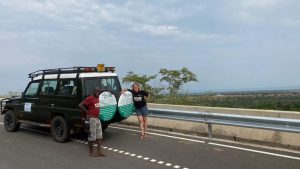
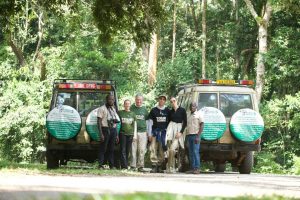
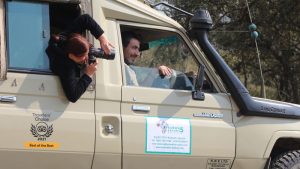
Between eight and ten hours are needed to go from Uganda’s main airport, Entebbe, to Bwindi. There is just one trailhead from which to begin a gorilla hike in Rwanda, but in Bwindi there are four. You’ll need a sturdy 4×4 vehicle to reach some of them. On the other hand, Bwindi is accessible via regularly scheduled aircraft.
A visit to Bwindi might also be part of a longer road trip through Uganda that takes in several of the country’s parks and reserves. Rwanda is the most accessible location for a short gorilla trekking tour or safari extension to Kenya or Tanzania.
H. Contract 9: Gorilla Trekking Alongside Safari
Uganda has far more places to see wildlife than neighboring Rwanda does. It includes 10 national parks, two of which are excellent for gorilla trekking (Bwindi Impenetrable National Park and Mgahinga Gorilla National Park). Although Rwanda is home to four national parks, only two are conducive to gorilla trekking, and Volcanoes National Park is the only place where mountain gorillas really live in the wild. To add insult to injury, Uganda is nine times larger than Rwanda, making it more difficult to navigate Uganda and more difficult to get to the gorilla habitat in Uganda.
In spite of these differences, mountain gorillas in both nations are the same species and behave similarly (though certain family features may vary), the number of visitors is limited in both countries, and spending an hour with a gorilla family will elicit the same avalanche of feelings in either.
In most cases, a gorilla trek will be part of a larger safari. In this regard, Uganda has greater opportunities than Rwanda. Murchison Falls and Queen Elizabeth National Parks in Uganda are two of the best savannah reserves in the world. Animals including elephants, lions, buffalo, and giraffes are common sights on this safari. Except for rhinos, who are located in the Ziwa Rhino Sanctuary, all of the Big Five are there. Additionally, chimpanzee trekking is very popular in Uganda, and Lake Bunyonyi is a wonderful place to relax for a few days after an exciting safari.
Rwanda is not as well known as other safari destinations, but it does offer a few excellent off-the-beaten-path jewels that are well worth including in your gorilla journey. Akagera National Park is a beautiful Big Five savannah park, while Nyungwe National Park is a montane rainforest that is home to 13 different species of primate, including chimpanzees.
I. Contract 10: Culture Interaction Experience
Both Bwindi Impenetrable National Park and Volcanoes National Park offer thrilling cultural interaction experience either before or after the trek.
- Batwa cultural experience in Bwindi
Batwa pymies are a group of indigenous short people who once called the Bwindi impenetrable forest home. This region of Uganda was designated a protected area so that mountain gorillas could be preserved, and visitors on a Uganda Gorilla trekking tour will have the opportunity to meet these fascinating people. The Batwa Cultural Tour takes you on a journey through time, illuminating the history and culture of the indigenous Batwa pygmies along the way. The twenty dollars you’ll spend on the Batwa cultural tour will help sustain these nomadic community of former hunters and gatherers.
- ibyiwacu cultural center
If you’re looking for some cultural flavor to add to your Gorilla trekking Rwanda adventure, a stop at the ibyiwacu cultural center in Volcanoes National Park will do the trick. Lots of resources about Rwandan history, cuisine, dancing, and more may be found at the Ibyiwacu Cultural Centre. If you’re interested in learning more about Rwanda and its people, you may pay $75 to visit this amazing Centre.
J. Contract 11: Ease of communication
While English is spoken widely throughout Uganda, many people in Rwanda only speak Kinyarwanda and French, making it difficult to interact if you are not accompanied by a guide.
K. Contract 12: Community Development
Rwanda only donates 10% of the proceeds from gorilla tracking permits to conservation efforts, whereas Uganda donates 20%.
L. Contract 8: When To Visit For Gorilla Trekking
A) Weather and Climate In Bwindi Impenetrable National Park
The weather at Bwindi Impenetrable Forest National Park is warm and damp. Given its proximity to the equator, the weather there is mild all year round. Normal daytime highs hover about 23°C/73°F, with nighttime lows dipping to approximately 11°C/52°F.
Rainfall in Bwindi is plentiful throughout the year. The driest months are June and July. The wettest months are March through May and October through November. It’s crucial to wear waterproof gear and sturdy hiking boots.
Dry Seasons In Bwindi Impenetrable National Park
- June through August and December through February are dry months.
Through the months of June, July, and August – There is still a chance of rain in June and July, the two driest months. August is when the rains really begin to come down hard. Average highs throughout the daytime reach 23 degrees Celsius (73 degrees Fahrenheit), while lows in the morning hover around 11 degrees Celsius (52 degrees Fahrenheit). Higher elevations are significantly chillier.
- During the months of December, January, and February.
There is a brief period of lower rainfall. By December, the rains had slowed down, and by February, they have picked up again. The mornings are typically around 11 degrees Celsius (52 degrees Fahrenheit), while the daytime highs are approximately 24 degrees Celsius (75 degrees Fahrenheit).
Wet Seasons In Bwindi Impenetrable National Park
There are two wet periods a year, from March to May and September to November.
- March, April, and May see a rise in precipitation, with April often seeing the most rain.
It’s recommended to have a 4×4 vehicle for the trip to Bwindi because the route might get muddy and treacherous. Hiking becomes increasingly hazardous when rain causes the forest floor to become slick. Typically, the mornings are chilly, at 12 degrees Celsius (54 degrees Fahrenheit), while the days are warm, averaging 23 degrees Celsius (73 degrees Fahrenheit).
- The months of September, October, and November are wetter than the rest of the year.
It can rain for days at a time. Daytime highs are about 73 degrees Fahrenheit (23 degrees Celsius). After a storm, the forest pathways can turn dangerously slick.
A) Weather and Climate In Volcanoes National Park
Every so often, the sun peeks through the clouds and warms up Volcanoes National Park. Because of the high altitude and the precipitation it causes, the weather is typically cloudy and chilly. Over the course of a year, there is not much of a temperature swing. By day, temperatures average around a comfortable 15 degrees Celsius (59 Fahrenheit). Nighttime lows average 7°C (45°F).
- Dry Season is from June through August.
The dry months of June through August are the exception to the heavy rainfall that occurs the rest of the year. We advise bringing along warm, waterproof gear and sturdy hiking shoes for your trip, whenever that may be.
- June and July are typically the driest months of the year, however rain is always possible.
The weather is perfect for mountaineering and gorilla tracking right now. The daytime highs average 15 °C (59 °F), while the lows average 7 °C (45 °F).
- In August, the rainfall increases somewhat from the previous month. But the weather stays steady at around the same temperature. Gorilla tracking is still fantastic this time of year.
Wet Season is from September to May
At this time of year, showers are common, though they tend to fall later in the day than they do in the morning. Don’t leave home without a good pair of hiking boots and many layers of warm, waterproof clothes.
- September is the wettest month of the year. Daytime highs average approximately 14 °C (57 °F). The average nighttime temperature is a chilly 8°C (46°F).
- It rains heavily in both October and November, with November being the wettest month. Conditions continue to be rather constant in terms of temperature.
- January, February, and December – Even if it rains less than in October and November, showers can still occur at any time. Rain gear is still essential.
- Rainfall is heaviest in March and April. As the weather becomes colder, the routes become icy and hazardous for hikers. The temperature seldom shifts.
- There is less precipitation and more sunshine in May. Temperatures during the day do not change.
Both nations are safe for tourists to visit despite the pros and cons I’ve mentioned, so the final decision is up to you.
How about the fact that Uganda is home to more Mountain Gorillas than any other country? Less than 1200 mountain gorillas remain in the wild today, with over half of them calling Uganda’s Bwindi Impenetrable Forest home. When on safari, gorilla trekking is a must-do activity.
You should pick a location based on how well it fits in with your vacation budget and your desired experiences.
This blog answers questions such as;
- gorilla trekking uganda price
- gorilla trekking rwanda prices
- rwanda or uganda for gorillas
- best gorilla safari rwanda
- is gorilla trekking safe
- best gorilla safari uganda

